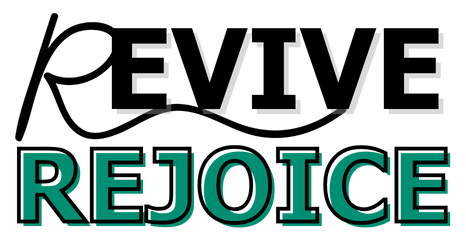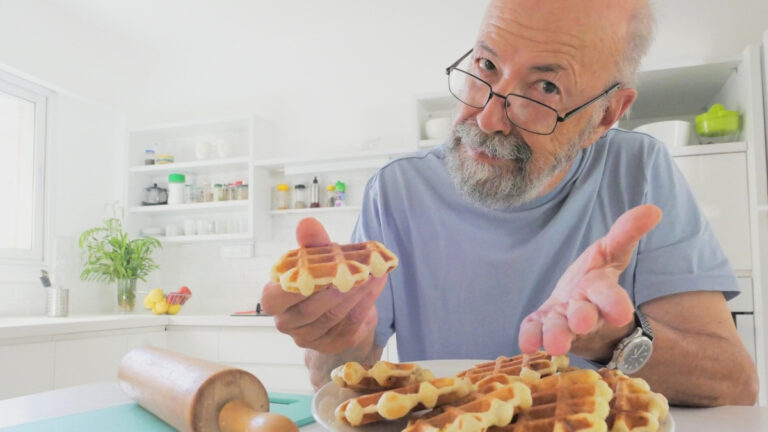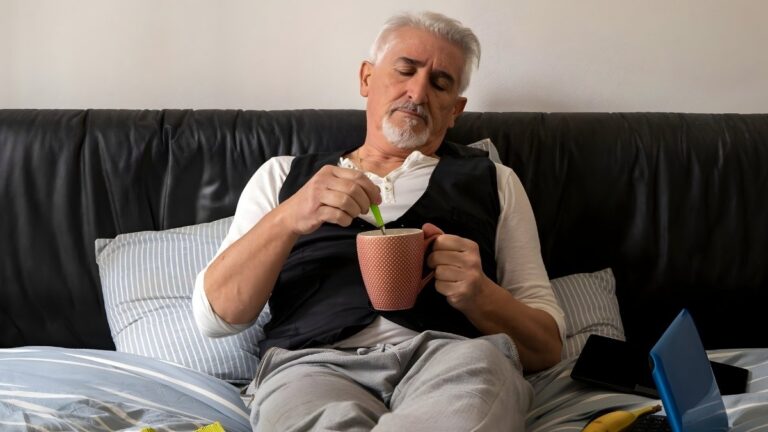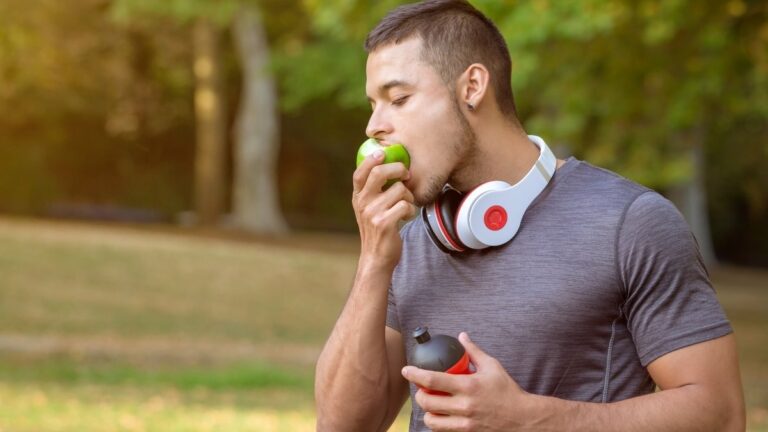“Why Am I So Tired All the Time After 60?” The Shocking Diet Tweaks That Actually Boost Energy (The Last Guide You’ll Need)
If you feel tired all the time, you are not just “getting old.” And you are not alone. That feeling of daily fatigue in older adults is a real, clinical issue. A 2025 meta-analysis found that 42.6% of older adults experience this kind of fatigue.
But there is a second, more specific feeling: “physical fatigability.” This is when simple tasks, like carrying groceries or walking up stairs, feel exhausting. Studies show this is even more common, affecting a staggering 58.2% of seniors. This feeling is a sign that something is wrong.
This is not just in your head. Research has found a clear physical cause. One of the strongest independent predictors of fatigue in older patients is “nutritional risk”.
This means that even after accounting for other diseases, poor nutrition by itself was a direct cause of fatigue. One multicenter survey found that nutritional risk made patients over three times more likely to suffer from fatigue.
The Senior’s Fatigue-Fighting Plate
Tap a section to see what powers you up!
The “Core 4” Energy Nutrients Seniors Are Often Missing
To get your energy back, you need to make every calorie count. This means focusing on what your food delivers. Low energy levels are often tied to gaps in nutrition. Four of these gaps are very common in older adults. We can group them by the “job” they do in your body.
Job 1: The Energy Delivery Nutrients (Iron & Vitamin B12)

Think of your energy system like a delivery service. You need red blood cells to pick up oxygen from your lungs. Then, they must “deliver” that oxygen to your muscles and your brain. Iron and Vitamin B12 are what build and maintain this critical delivery service.
Vitamin B12 Vitamin B12 deficiency is remarkably common in seniors. One reason is that the body’s ability to absorb it from food decreases with age. Studies on hospitalized seniors show this clearly. One study found 9.1% were fully deficient, and another 17.3% had “borderline” low levels.
This is a major source of Vitamin B12 deficiency fatigue. B12 is essential for making red blood cells and for keeping your nerves healthy. When levels are low, it is directly linked to frailty, cognitive decline, and a reduced functional status.
You can find B12 in animal products: fish, meat, dairy, and eggs. It is also added to fortified foods like breakfast cereals.
Iron Low iron is another common problem for iron deficiency in seniors. It can lead to anemia, which is a primary, known cause of fatigue. Anemia affects 12.5% of all adults aged 60 and older.
Iron’s job is at the very heart of energy delivery. It is essential to make hemoglobin. This is the molecule in your blood that physically grabs and carries oxygen.
Without enough iron, your body is “suffocating” for energy. You feel this as weakness, fatigue, and sometimes even shortness of breath. To get more, include leafy greens (spinach, kale), beans, lentils, and lean red meat in your diet.
Job 2: The Energy Creation Nutrients (Magnesium & Vitamin D)
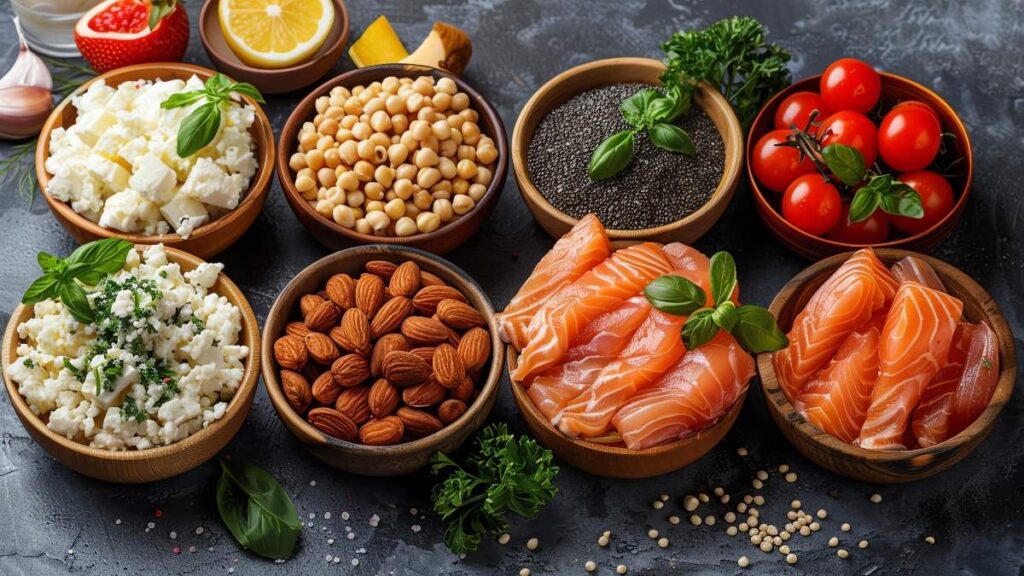
Once the oxygen is delivered, your cells have to use it. Your cells have tiny “engines” that turn food and oxygen into actual, usable energy. Magnesium and Vitamin D are the “spark plugs” that make this energy creation process work.
Magnesium Magnesium for energy is vital, but a deficiency is very common in older adults. It is also often missed in tests. One study of hospitalized older adults found that 22.3% had low magnesium levels.
Magnesium is essential for energy metabolism. It helps your muscles and nerves function correctly. A deficiency is linked to cognitive decline and “inflammaging,” which is low-grade, chronic inflammation that drains your body of energy.
You can find magnesium in whole grains, nuts (like almonds and walnuts), seeds, and leafy green vegetables.
Vitamin D The prevalence of Vitamin D deficiency in seniors is “considerably high”. A large meta-analysis found that 59.7% of older adults had deficient levels. This is a major gap in nutrition for seniors.
Vitamin D is crucial for bone and muscle strength. In fact, muscle weakness and fatigue are classic, primary signs that your levels are too low. It helps build your muscle “engine.”
Without it, your muscles are weak and you feel tired. Find it in fortified dairy, fatty fish (like salmon), and egg yolks. Your body makes Vitamin D from sunlight, but this process gets less efficient with age.
Eat for Stamina: The 3 Pillars of Your Daily Energy Meal Plan
Now you know the “why” behind your fatigue. This section is the “how.” This is not a diet. It is a simple, 3-pillar system to structure your plate for maximum, sustained energy. These are energy-boosting foods for seniors.
Pillar 1: Prioritize Lean Protein (To Fight Muscle Loss)

This pillar directly targets the “physical fatigability” that 58.2% of seniors feel. As we age, we all face sarcopenia. This is the natural decline of muscle mass, strength, and function. This muscle loss is a primary reason why minimal effort feels so exhausting.
The good news is you can fight it. The old advice for protein (0.8 grams per kilogram of body weight) is not enough for many seniors. Research now shows older adults may need more protein: about 1.0 to 1.2 grams per kilogram of body weight.
You should aim for a source of lean protein at every meal. Good choices include chicken, turkey, fatty fish (like salmon), eggs, and low-fat dairy (like Greek yogurt or cottage cheese). Plant-based options like beans, lentils, and tofu are also excellent.
Pillar 2: Choose “Slow-Burn” Carbs (For Sustained Energy)
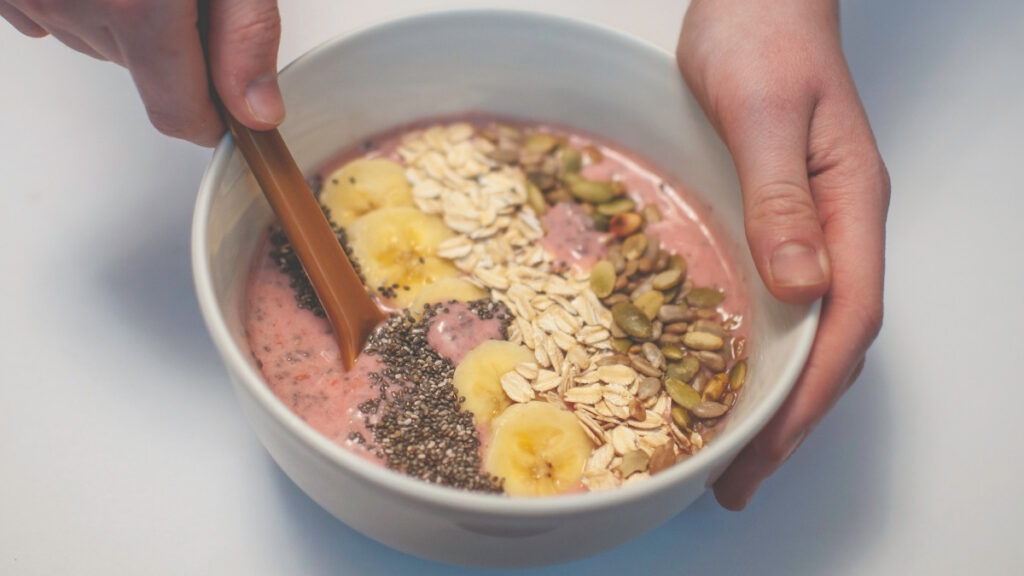
This pillar provides the fuel. There is a big difference between “fast-burn” and “slow-burn” carbohydrates. “Fast-burn” carbs are foods like white bread, pastries, and sugar. They lack fiber. They flood your body with sugar, giving you a quick spike followed by a “rapid crash”.
“Slow-burn” or complex carbohydrates are the solution. These foods have fiber, so they digest slowly. This gives you a smooth, extended release of energy. Build your meals around these “slow-burning” complex carbohydrates.
This will keep your blood sugar stable and prevent the crashes that cause fatigue. Good sources are oats, brown rice, whole-wheat bread, quinoa, beans, lentils, fruits, and vegetables.
Pillar 3: Focus on Healthy Fats (For Brain & Body Fuel)
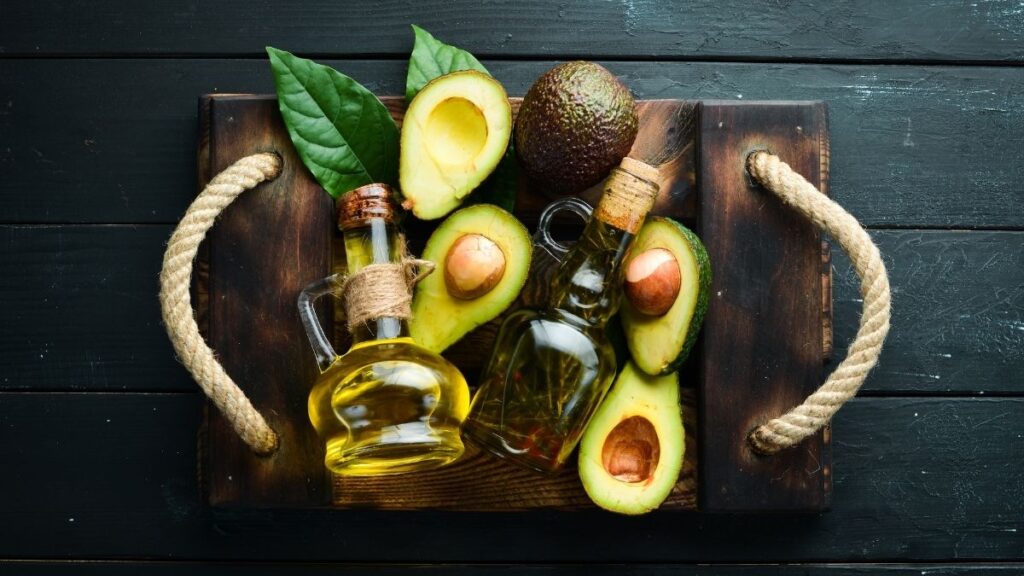
Fats are not the enemy. They are a concentrated, long-lasting energy source that also supports your brain function. As we get older, our appetites can get smaller. This makes it vital to “make every calorie count.” Healthy fats are the best way to do this.
As Registered Dietitian Nutritionist Grace Dueñas-Tanbonliong told the American Heart Association in late 2024, “If there’s a No. 1 nutrition tip for older adults, it’s to make every calorie count”. This means choosing foods that are rich in nutrients, not just calories.
Cook with olive oil. Add healthy fats to your meals and snacks. The best sources are avocados, nuts (like almonds and walnuts), seeds (like chia and flax), and olive oil.
This 3-pillar system is a practical way to build the perfect plate. It is the model the USDA’s MyPlate for Older Adults recommends: a mix of fruits, vegetables, whole grains, and protein foods.
The 24-Hour Energy Saboteurs: The Foods and Drinks Costing You Energy
Sometimes, the things we use to fight fatigue are the very things causing it. This creates a vicious 24-hour cycle.
You wake up tired, use “fast” energy to get through the day, and that “fast” energy ruins your sleep. Then you wake up even more tired. Here is how to break that cycle.
The Mid-Day Crash: Refined Sugars and Carbs
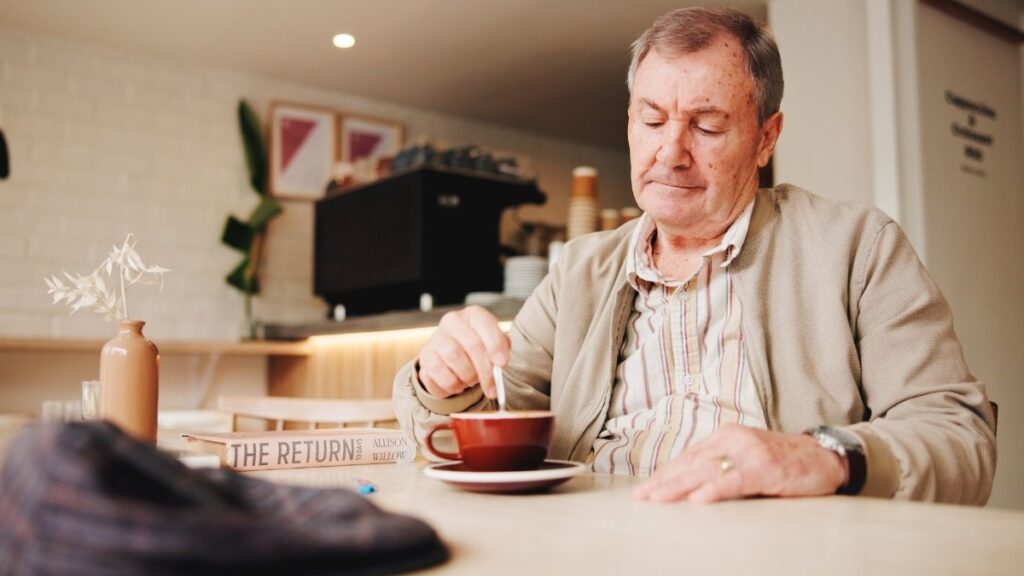
A sugary snack or a pastry gives you a quick “boost.” But this floods your bloodstream with glucose. Your body releases insulin to clean it up, but it “sometimes too efficiently” overcorrects. This leads to a “rapid drop in blood glucose”.
This “crash” is what you feel as sluggishness, brain fog, and fatigue. You feel even more tired than before.
This is not just a short-term problem. Diets high in refined carbs are linked to “lower odds of healthy aging”. The fix is to swap white bread, sugary cereals, and sweets for the “slow-burn” carbs in Pillar 2.
Are You in a Fatigue Trap?
Click your symptoms to find the escape route!
The All-Day Fatigue: Sleep Disrupters (Caffeine & Alcohol)

The Caffeine Trap That afternoon coffee seems helpful, but it could be the root cause of your fatigue. As we age, our bodies metabolize caffeine much more slowly. A 2025 UCLA Health report found that adults aged 65-70 can take 33% longer to clear caffeine from their system.
This means your 2 PM coffee can still be chemically active in your brain at 10 PM. It disrupts your deep, restorative sleep patterns , even if you think you are sleeping fine.
This leads directly to significant next-day fatigue. As a senior, set a “caffeine curfew.” For many, this means no caffeine after 12 PM (noon) to protect your sleep.
The Alcohol Deception A “nightcap” to help you unwind may make you feel drowsy, but it destroys sleep quality. Alcohol blocks your brain from entering REM sleep. This is the most important, restorative stage of sleep.
Alcohol also relaxes your throat muscles. This can worsen snoring and sleep apnea, causing you to wake up more often. You may “sleep” for 8 hours but wake up feeling exhausted. To fix this, avoid alcohol within 3 to 4 hours of your bedtime.
The “No-Energy-to-Cook” Plan: 15 Quick Energy-Boosting Meals & Snacks
Good nutrition for seniors should not be exhausting. When you are already tired, the solution is not a complex, hard-to-make meal. The best strategy is to eat smaller, balanced meals and snacks every 3-4 hours. This helps maintain steady energy and blood sugar.
Here are 15 minimal-prep, energy-boosting snacks and no-cook meals for seniors. Each one combines the 3 Pillars: protein, healthy fats, and “slow-burn” carbs.
5 Minimal-Prep Breakfast Ideas

Greek Yogurt Power Bowl: 1 cup Greek yogurt + 1/2 cup berries + 1 tbsp walnuts.
Cottage Cheese & Fruit: 1/2 cup cottage cheese + 1/2 sliced peach + 1 tbsp flax seeds.
Protein Oatmeal: 1 packet instant oats + 1 scoop protein powder (or 2 tbsp nut butter) + 1/2 sliced banana.
Scrambled Eggs & Spinach: 2 eggs + 1 big handful pre-washed spinach + 1 slice whole-wheat toast.
Hard-Boiled Egg & Avocado Toast: 1-2 hard-boiled eggs + 1/4 avocado on 1 slice whole-wheat toast.
5 No-Cook Lunch/Dinner Ideas
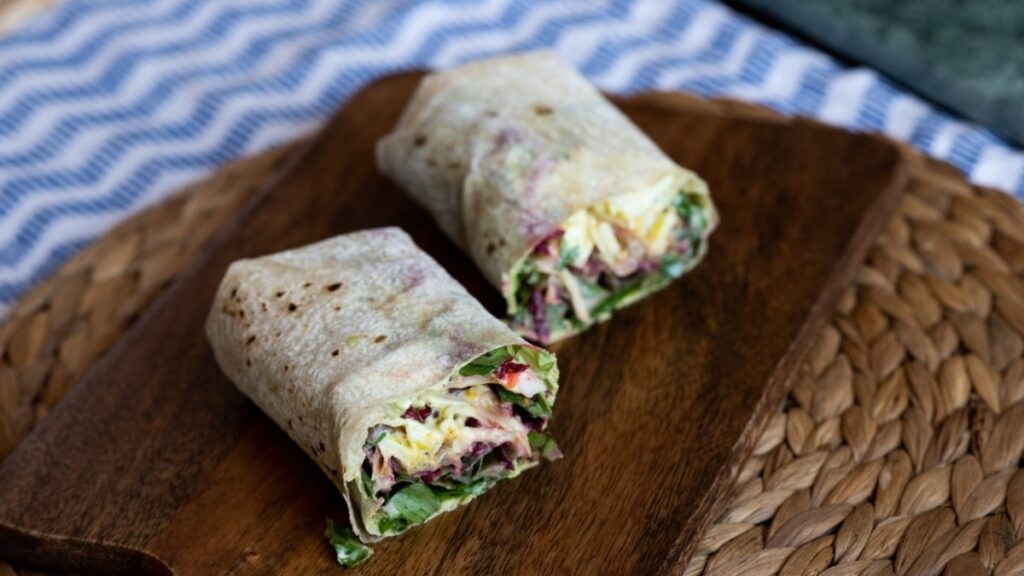
Hummus Veggie Wrap: 1 whole-wheat tortilla + 2 tbsp hummus + 1/2 cup pre-cut veggies (peppers, carrots).
Rotisserie Chicken Salad: 3-4 oz store-bought rotisserie chicken + 2 cups mixed greens + olive oil vinaigrette.
Turkey & Hummus Roll-Ups: 4 slices deli turkey rolled with 1 tbsp hummus and a cucumber spear inside each.
Tuna & White Bean Salad: 1 can tuna + 1/2 can white beans + 1 tbsp olive oil and lemon juice.
Mediterranean Chickpea Salad: 1 can chickpeas + 1/4 cup diced cucumber/tomato + 1 oz feta + vinaigrette.
5 Easy Energy-Boosting Snacks
- An apple with 1 string cheese.
- A handful of almonds and a small orange.
- 4-6 whole-wheat crackers with 2 slices of deli turkey.
- Veggie sticks (carrots, bell peppers) with 1/4 cup hummus.
- A single-serving Greek yogurt.
Create a Virtuous Cycle: 3 More Levers to Boost Your Energy
Your new meal plan is the spark. These three habits will turn that spark into a sustainable fire. They work together to create a virtuous cycle that builds energy, a direct opposite of the “vicious cycle” that drains it.
Lever 1: Hydrate, Hydrate, Hydrate

This is the easiest fix for low energy. The sense of thirst can diminish with age. This means your body can be low on water, but the “alarm bell” (thirst) does not ring.
Even mild dehydration is a common and rapid cause of fatigue. It “tanks” your alertness. The action is simple: Keep a water bottle with you all day. Aim for 9-13 cups of fluid (from water, fruits, soups) unless your doctor has advised otherwise.
Lever 2: Use Nutrition to Unlock Better Sleep

You do not just eat for waking energy. You also eat for sleeping energy. This is the heart of the virtuous cycle. What you eat during the day directly impacts how well you sleep that night.
Research shows that a higher intake of fruits and vegetables is linked to better, more sound sleep. Other studies show that a diet with adequate protein is a protective factor for good sleep quality. Your new 3-Pillar meal plan is also a sleep plan.
Lever 3: Get Moving to Create Energy

This seems backward. You think, “I’m too tired to exercise.” But gentle exercise does not spend energy; it creates it. It builds your stamina and makes your body better at producing energy.
You do not need to run a marathon. Start small. A 15-minute walk is a perfect start. Gentle activities like yoga and Tai Chi are proven to build stamina, improve balance , and reduce fatigue.
This is how you build momentum: better food gives you better sleep, which gives you just enough energy for a short walk. That walk builds new energy for tomorrow.
The 24-Hour Energy Cycle
Coffee for energy slump. ⚠️ Sleep Disruption!
15-min brisk walk. (Natural energy boost)
Wine to unwind. ⚠️ REM Sleep Disrupted!
Salmon + Veggies. (Supports deep sleep)
Poor, fragmented sleep.
Restful, deep sleep.
Your First Step to Reclaiming Your Energy
Beating daily fatigue as a senior is possible. It starts on your plate. Remember, your fatigue is not just “old age.” It is often a sign of overlooked nutritional needs.
By prioritizing the “Core 4” energy nutrients, focusing on lean protein, “slow-burn” carbs, and healthy fats, and limiting sleep-disrupting caffeine and sugar, you can build a new foundation for energy.
You do not have to overhaul your life tomorrow. Your first step: Pick one no-cook meal from the list above and try it for lunch. If your fatigue persists, print this article and bring it to your doctor or a Registered Dietitian.
You have the power to reclaim your energy. These nutrition tips for seniors’ fatigue are your first step to a more vibrant, active life.

